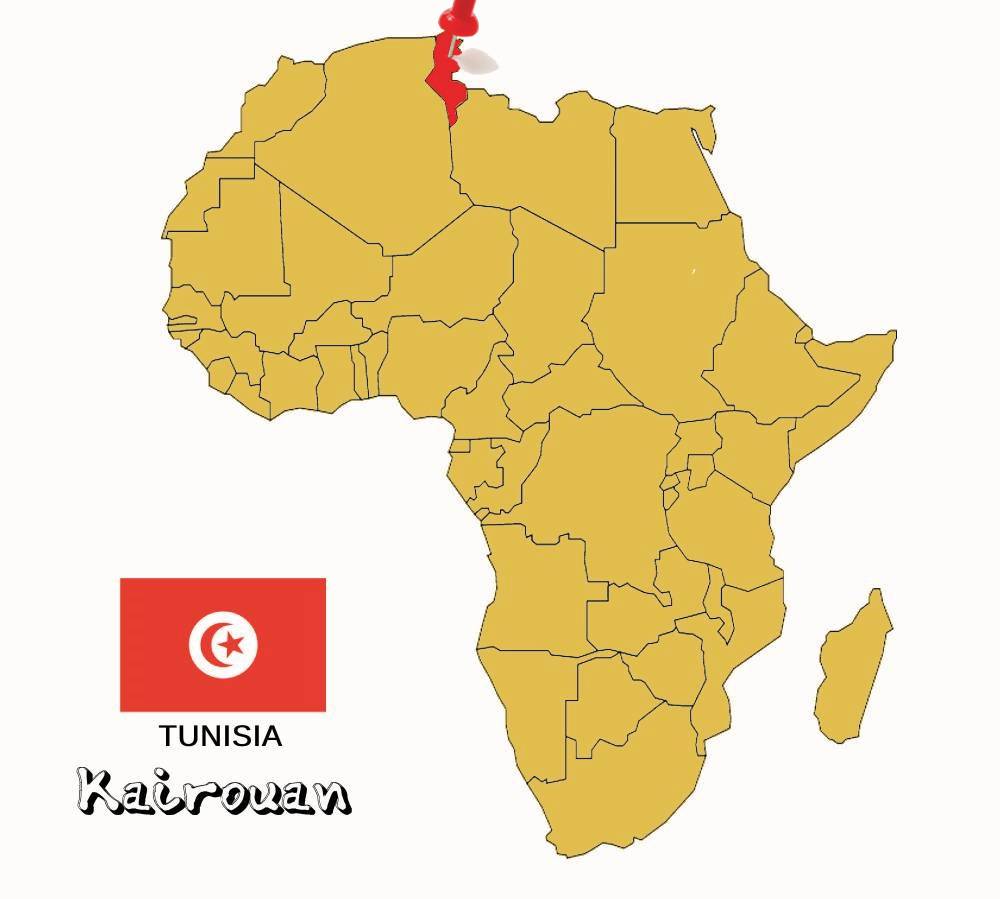
A city located in the center of Tunisia on a plain at an almost equal distance from the sea and the mountain, it is classified as the fourth holiest town for Muslims. A place with a rich history, special architecture and kind people that you should definitely add to your list.
A few words about the city
Kairouan is a significant city in Tunisia, located in the northeastern part of the country, being the capital of the homonymous Governorate. Its name comes from the corresponding Persian word meaning caravan, and was founded around 670, initially as a camp during the movement of the Arabs to the west coast of North Africa. According to the latest census, the population of the city is 117,903 inhabitants, who are called Kairouans. It is one of the largest religious centers of Islamism, being designated the fourth holy city after Mecca, Medina and Jerusalem. This is where the historic and majestic "mosque of UKBA" is located, which has been declared a World Heritage Site by UNESCO. So I will try to present Kairouan to you through my own eyes and share with you what I think someone who visits it for the first time should see.
Great Mosque of Kairouan
The Great Mosque of Kairouan, also known as the Uqba Mosque, is the city's most important attraction and one of the main reasons to visit. It is the oldest and one of the largest Islamic monuments in North Africa, which in fact became a model for all later mosques in the region. It was founded by the Arab general Uqba ibn Nafi in 670 AD, but the building we see today is the result of the reconstruction done in the 9th century by Prince Ziyadat Allah I! It occupies an area of more than 9,000 square meters and contains a stylized prayer hall, a marble-paved courtyard and a square minaret. Non-Muslims are unallowed to enter the prayer hall, but there is an outside window where you can look inside.
Medina
Like any self-respecting Arab metropolis, Kairouan revolves around its old city. The Medina of Kairouan has changed little over the centuries, being surrounded by high walls and filled with simple houses with arches and shutters painted in bright blues and greens. The first walls of Medina were constructed towards the end of the 8th century, but the ones we see today date mainly to the 18th century. Of the numerous gates, the oldest and most famous is Bab El Khoukha, which was built in 1706, reminiscent of a horseshoe arch, supported by columns. There you will find dozens of shops and markets that sell literally everything. From various traditional local products, to clothes, shoes and jewelry. Of course, in the Medina, there are also several cafes and restaurants, where you can sit and relax after an exploratory tour.

Zaouia of Sidi Sahabi
Also known as the Barber's Mosque, this particular complex dates back to the mid-17th century. In the mausoleum there is the tomb of one of the companions of the Prophet Muhammad, Abu Zama El Belaoui, who died in 685. According to the legend, he always carried with him three hairs from the Prophet's beard, hence the informal name of the building. The Zaouia of Sidi Sahabi is notable for its exquisite decoration, as it is adorned with beautiful mosaic tiles, while the tomb has a beautiful tiled roof and a plaster dome. Visitors can visit the courtyard, but only Muslims can enter the mosque, while the tomb is closed to the public!
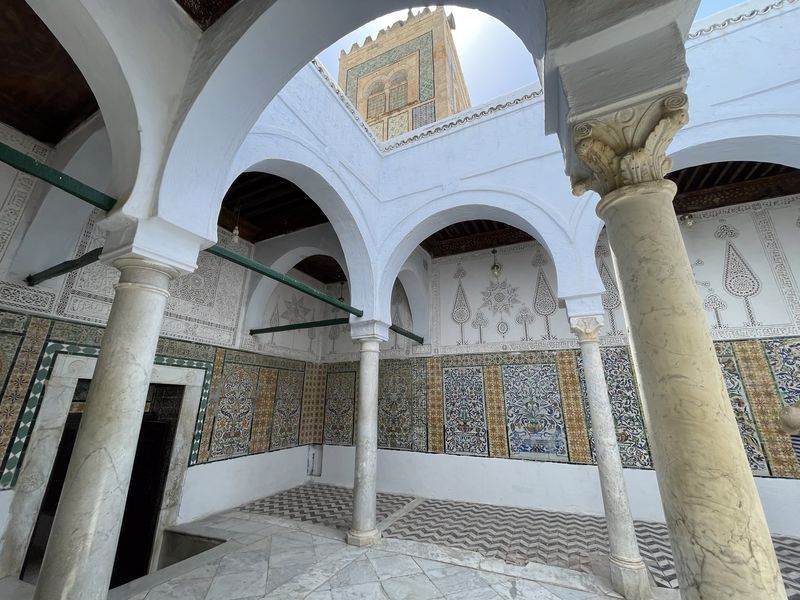
Basins of Aghlabides
The ancient city of Kairouan was located in a semi-arid region, prone to drought, with no nearby rivers or natural water sources. As a result, the supply and storage of water has been a major problem for more than a thousand years. The solution was provided through the magnificent Basins of Aghlabides, a huge and highly advanced engineering project in the Middle Ages! The hydraulic aggregate, built in the 9th century, supplied water to the inhabitants of the city for more than a millennium. It consisted of sixteen connected tanks, which collected rainwater, with the aim of being used for washing or emergencies. Today, only two of these reservoirs have survived, but they are open to visitors, although water is still unrecommended for drinking.
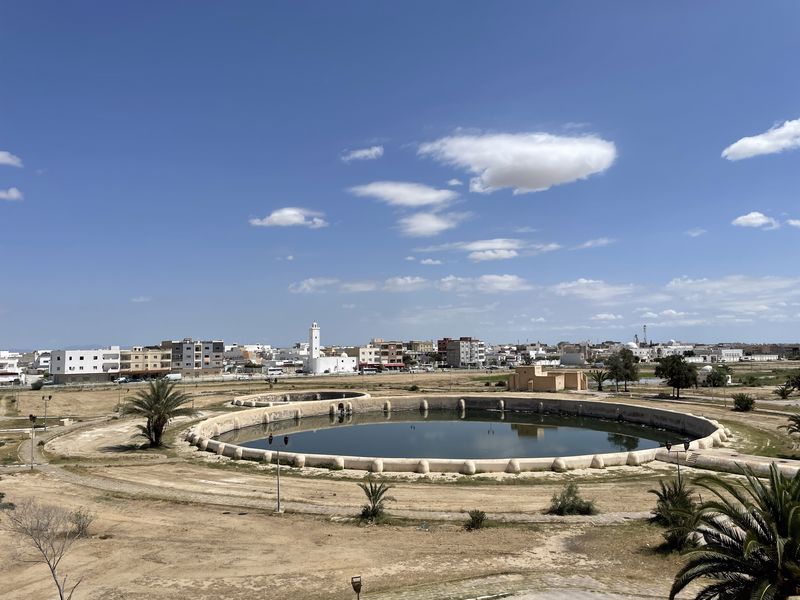
Bir Barrouta
Bir Barrouta is one of the most important and at the same time controversial attractions of the city. This is a 17th century well, which according to legend is connected to the Zamzam spring in Mecca! As you can easily see, this particular well is considered sacred to the locals, who often visit it for spiritual ritual. Fresh water is drawn from the well in traditional ways by means of a wheel and a camel, which pushes it to pour the water into the grooves and later into the vessels that can be used by visitors. Of course, this particular place is quite small and dark, and the conditions under which the camel is kept are unknown, which makes many visitors consider it cruel!
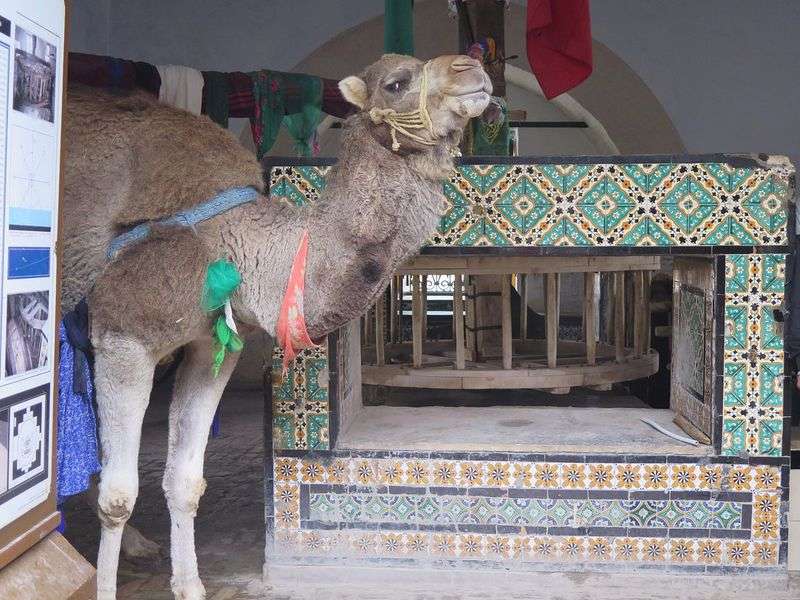
Zaouia of Sidi Ali El Ghariani
Another mosque that you should not miss if you find yourself in Kairouan is the Zaouia of Sidi Ali El Ghariani. It is a two-storied mosque, which dates back to the 14th century and stands out for its beautiful Islamic character. It was originally built as a madrasah (school for the study of the Koran) by a Cyrene scholar named al-Jadidi and over the centuries it took its current form. It has painted black and white arches, marble columns with carved capitals, a Moorish style ceiling, wood carvings and other features of its own. Also, here non-Muslims are not allowed to enter, but you can still tour its exteriors and see the interior through small openings.
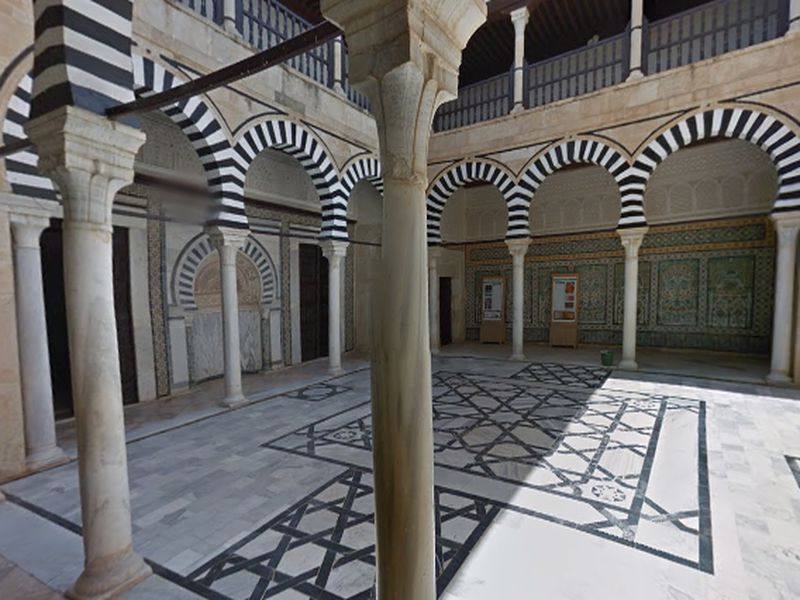
Mosque of the Three Doors
The tour of the Muslim mosques of Kairouan continues and next is the Mosque of the Three Doors or Mosque of Mohammed ibn Khairun. It is one of the oldest mosques in the world, having been built by Muhammad ibn Khairun in 866, with the minaret added many centuries later (1440)! The main characteristic of this particular temple is the three doors, while it is an outstanding example of the architectural design of the Aghlabid era. As you may have already suspected, non-Muslims are not allowed to enter here either.
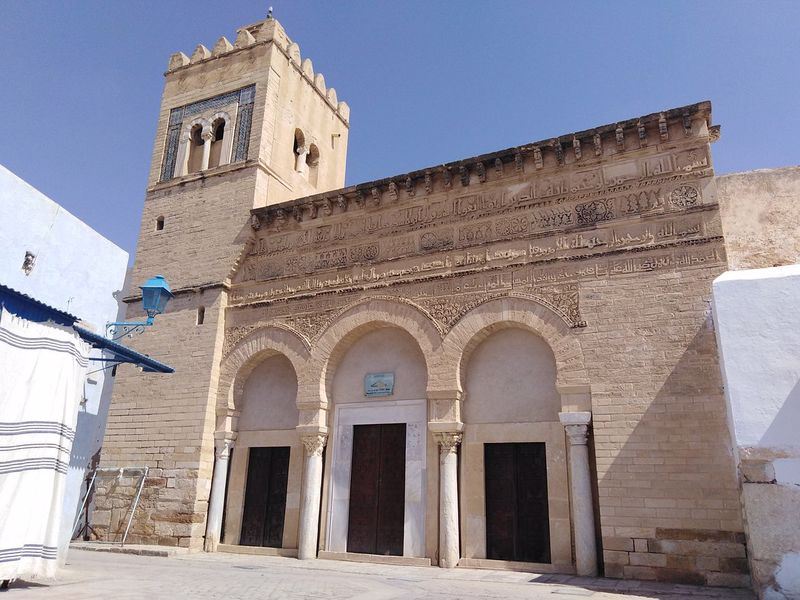
Musée national d'art islamique de Raqqada
Last but not least I left the most special museum of the region, which is only fifteen minutes from Kairouan at the archaeological site of Raqqada. The National Museum of Islamic Art of Raqqada (Musée national d'art islamique de Raqqada) specializes in medieval Islamic art and contains works from Kairouan and the sites of Raqqada and Al-Mansuriya, a former princely city built during the Fatimid period. One hall is dedicated to the city's Great Mosque, one displays collections of ceramics dating back to the 9th and 10th centuries, one features coins from various periods, and the most important is the one with calligraphic Korans! The entrance costs 5 Tunisian dinars, which is about 1.5e.

How to go
In Kairouan there is no airport, so if you want to visit the city, you will first have to go to another Tunisian town. The most economical and flexible option comes from Aegean with a stopover in Athens, where with proper planning one can find tickets starting from 93€ roundtrip! From there you can go to the city either by bus or rent a car, which will save you both time and money!
Where to stay
Kairouan is not a highly touristic city, so there are not too many hotels and those that exist are more expensive than they are worth! My suggestion is to get out of the city center and more specifically stay at Hotel Continental. This is a three-star hotel, which has all the modern amenities that one might need on such a trip!
How to move
The truth is Kairouan does not have many ways of moving within its walls! There are some buses mainly used by the locals, mini buses that connect the city with other Tunisian cities, many taxis, while there is no need for trains. However, the most reliable way of moving around the town is with a rental car, which you will have booked in advance!
What to eat
Tunisian cuisine is a blend of flavors representative of the country's past and its central location in North Africa. While the cuisine varies from region to region, Tunisian food typically combines French and African flavors with spicy touches. Based on the country's staple food, couscous, Tunisian dishes often include seafood, lamb, beef or fresh vegetables! As I said the most famous dish of the whole country is Couscous, which comes from semolina and you will find it in every restaurant and tavern of this country. Other notable traditional dishes are Brik, which is essentially a pastry with various fillings and a poached egg. Ojja also has egg, considered a breakfast dish and is basically an omelette with hot sauce and pieces of lamb! Also worth trying is the Mechouia salad, which contains egg, tuna, aubergines, peppers and olives, the Tunisian Tabouneh bread, which takes its name from the oven in which it is baked, and the hot Harissa sauce, which contains hot chili peppers and garlic! For sweets, don't miss the traditional Makrouth syrups and the Bambalouni, the Tunisian donuts. Finally, the main drinks are, of course, mint tea, usually served with almonds or pine nuts, and red wine, something the country is famous for! To try traditional flavors without fear, I recommend Dar Abderrahman Zarrouk.
Useful information

In Kairouan we travel with a Passport valid for at least 6 months. You do not need a Visa to enter the country, while you must fill in the immigration form, so that it will be considered during passport control.
In Kairouan the language used is, of course, Arabic and more specifically a Tunisian dialect, while everyone also knows French. As for English, most of them don't know a single word, but everyone is willing to help if they know.
The country's currency is the Tunisian Dinar (TND) and its current exchange rate is €1 = 3.17 dinars. Many small shops in the bazaars accept dollars and euros.
I suggest you transfer your money to some bank in the city where they keep the lowest commission and not exchange offices!
Kairouan is two hours behind Greece (GMT 0).
In Kairouan there is no Greek embassy or any Greek consulate so if you need anything you should contact the nearest one, located in Tunis at 6, rue Saint Fulgence, Notre Dame and its telephone numbers are +21671 288411, 287240.
Recommended excursions → Tunis, El Jem, Sousse, Monastir, Sfax

If this article seemed interesting or contributed to your quality information, then you can like my facebook page: o_thessalonikios or follow me on instagram!
Mouzakidis Pantelis

